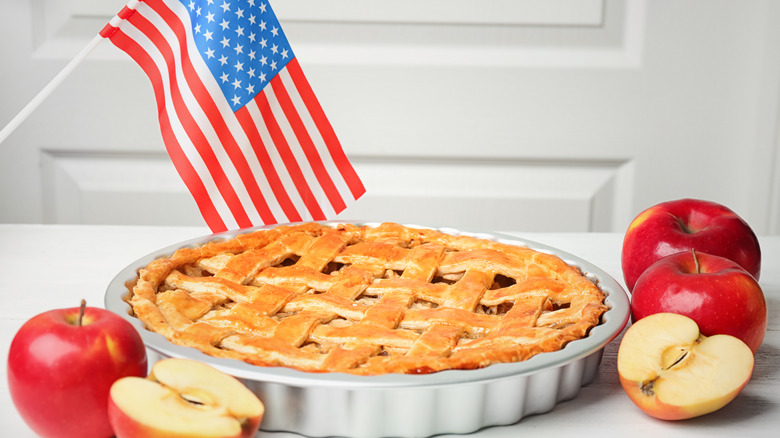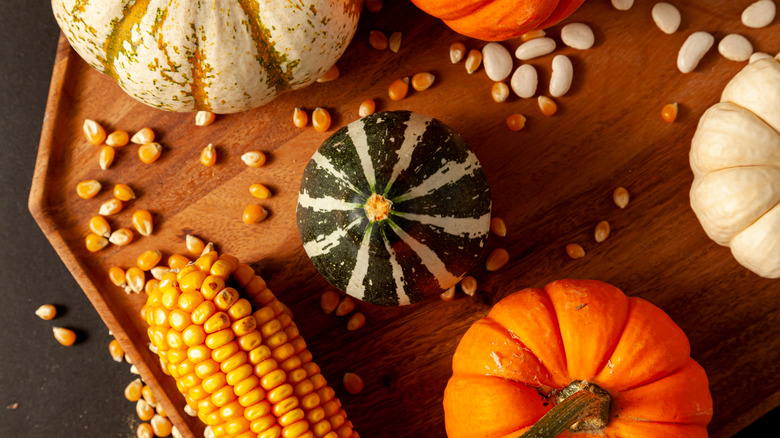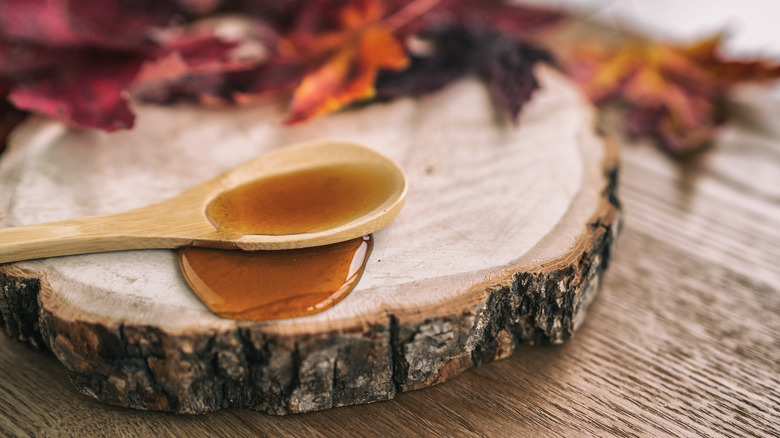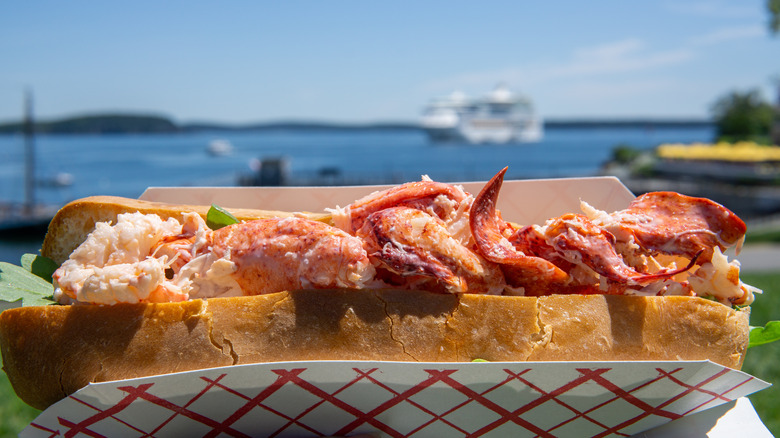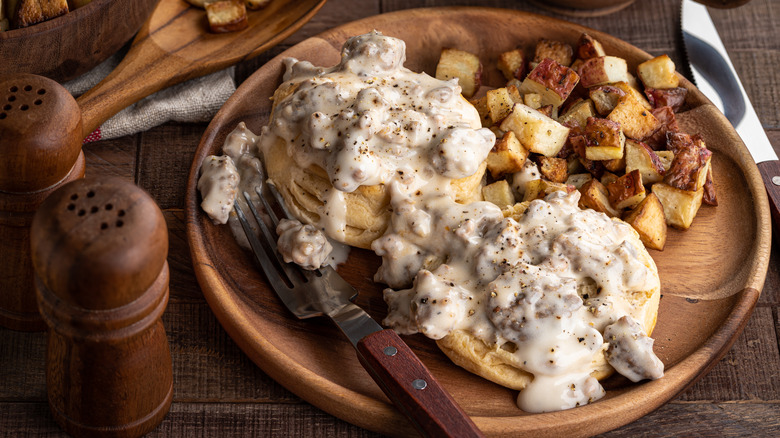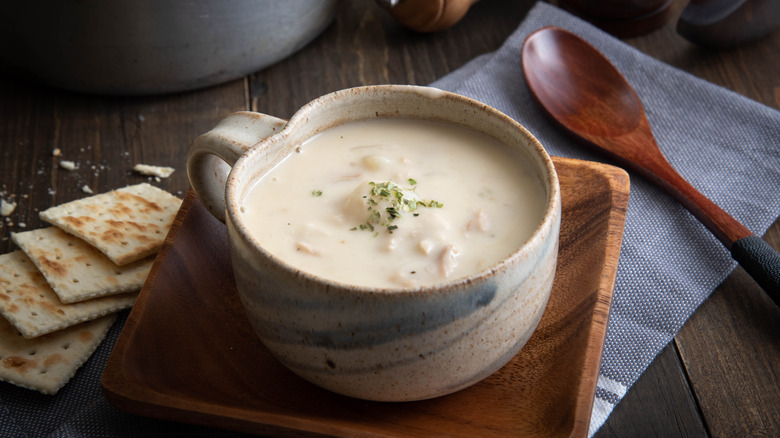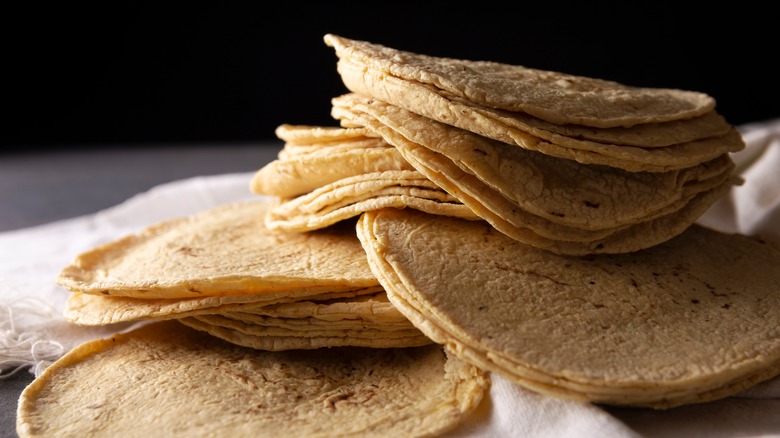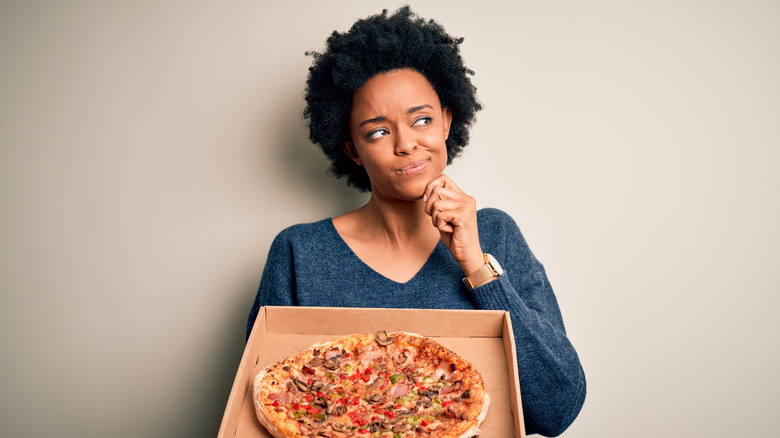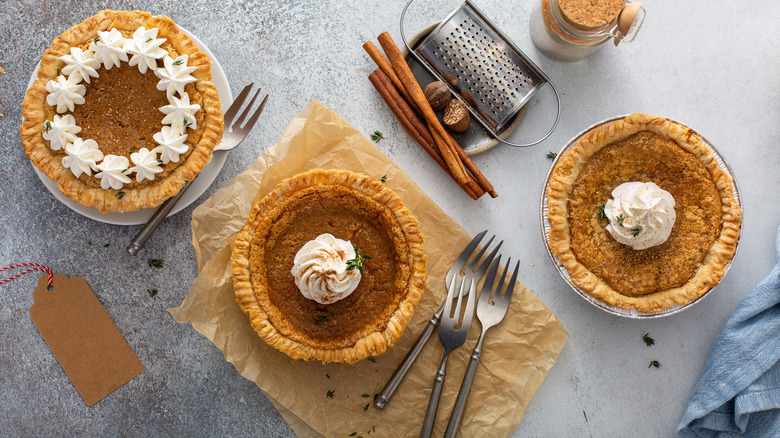The Best American Food On TikTok
Search for #americanfood on TikTok you'll find clips of people trying Flamin' Hot Cheetos like this one. Yes, this is a facet of American cuisine, but the whole picture is much more complex. People with a huge range of backgrounds and histories make up the United States. Each region and family have favorite recipes that are passed down from generation to generation.
In 1931, Irma S. Rombauer wrote down her family's favorites in a self-published cookbook called "Joy of Cooking," according to publishers Simon and Schuster. Today, there are more than 2 million copies in print, making it one of America's most-read recipe collections. The story doesn't stop there. Since then, her daughter, grandson, and great-grandson have all contributed to the subsequent updated editions.
This is a reflection of how cooking and families work. Sue Samuelson analyzed this in her essay, Grandma's Gone Global: Recipe Transmission from the Kitchenette to the Internet. Parents and grandparents pass their knowledge of cooking along. Long ago, they used spoken word, and later, written recipes. Now, the internet provides new formats.
Irma's family uses the web to share their knowledge too. They have official Instagram and Facebook accounts. Someone even has @joyofcooking for their TikTok handle, although it's unclear if Rombauer's descendants created the account or not. Of course, there are millions of other TikTokers sharing recipes that define their families and regions, as well. Here are some of the best from the U.S.
Three Sisters Soup
People lived, cooked, and ate in America long before it was called that, divided into colonies, or formed into the United States. Moreover, the crops and recipes that the First Nations and Native Americans used continue to impact how America eats today.
Consider this TikTok demonstrating the preparation of Three Sisters Soup, which is a mouthwatering combination of vegetables and elk meat. The three sisters are squash, beans, and corn. According to oral traditions collected at the Red River College library, the Iroquois believed that these plants were gifts from the gods that should always be grown and eaten together — and never separated. The corn provides support for the beans. The beans enrich the soil with nitrogen and the large leaves of the squash protect the soil from the sun, conserving water. For three centuries before contact with Europeans, the Iroquois cultivated the three food plants on mounds measuring about 1 foot high and 4 feet wide. Today, Americans continue to consume plenty of squash, corn, and beans, although the methods of growing them have changed.
Corn
Corn is the U.S.'s largest crop, according to the United States Department of Agriculture. In 2019, farmers grew 91.7 million acres of it. While a lot of this corn is for export or animal feed, a huge amount ends up on American plates in one form or another.
It's not just the sheer amount of corn harvested and consumed in the United States, though. This vegetable is particularly linked to American identity since it first developed here, according to the National Park Service. Researchers have uncovered cobs dating back 5,000 years. The evidence shows that Native Americans carefully pollinated a kind of wild grass to increase the size of the seeds. The final result was corn.
When Europeans arrived, the First Nations taught them to prepare and eat corn in various forms, such as bread, fried cakes, pudding, and soup. The simplest of all, though, was corn on the cob. Today, most people simply boil the ears in a pot of hot water. This recipe for Campfire Corn on the Cob seems to be a memory of simpler times since it directs cooks to place aluminum-wrapped ears directly over the hot coals of a fire. Of course, our favorite video app shows the other extreme; this TikTok, by @kelllllster, teaches people to make corn on the cob in the microwave without even having to shuck it first.
Maple syrup and cranberry sauce
Native Americans grew crops and hunted, but they also depended on what they could gather from nature like berries and syrup. Maple syrup was one of the most important sweeteners for the indigenous peoples of the Great Lakes and St. Lawrence River regions, according to Britannica. They'd been harvesting sap from maples for generations before passing the knowledge along to new arrivals from Europe. While most people find it easier to get their maple syrup from a shelf in the supermarket, @farmishterra in this syrup TikTok tries out the old-fashioned way, by tapping the maple tree in her yard and boiling down the sap. It looks fun to try.
In the northeast, the Algonquin and Wampanoag tribes depended on cranberries as an important source of food, according to the American Indian Health and Diet Project. These nations made a sauce by boiling the tart berries along with maple syrup as a sweetener. That doesn't sound so different from the cranberry sauce that makes an appearance every Thanksgiving. This TikTok by @mrs_dee_penda demonstrates its preparation. The cook uses sugar and adds citrus, so it's not quite like the original recipe, but delicious anyhow. Of course, some people will prefer to follow the written recipe for cranberry sauce.
Lobster rolls and sloppy Joes
According to USA Today, "The definitive American foods -– those that virtually define our national cuisine, and that are indelibly associated with summer -– are hot dogs and hamburgers." The U.S. consumes an average of 156 hamburgers and 70 hot dogs a year per person. The obsession with bun-ensconced foods doesn't stop there, though. The east coast loves its lobster rolls while the midwest prefers sloppy joes. Both are easy to find on TikTok.
The CT Post says there are two tribes of lobster roll eaters: lovers of the cold version (Maine-style) and fans of the hot one (Connecticut-style). A TikTok by @lindsayeatsla glorifies the Maine lobster roll, complete with celery, pickles, and mayo (here's a complete recipe). The comments below the video reflect the hot-cold conflict: The Angry Crab Shack said, "We like ours simple with lobster and hot butta."
There is less controversy surrounding the recipe for sloppy joes, although according to The Takeout there are at least two chefs nicknamed Sloppy Joe — one from Havanna, Cuba, and the other from Sioux City, Iowa — who could take credit. José "Sloppy Joe" Otero of Cuba provides a more interesting story. He's most famous for inventing the mojito at his bar and entertaining famous guests such as Ernest Hemingway. The author is supposedly responsible for bringing Jose's sandwich back to the U.S. Regardless of who made them popular originally, the sloppy joes in a TikTok by @1042_bbq look absolutely mouthwatering.
Corn dogs
Found at county fairs, sporting events, and school cafeterias, corn dogs combine several things people in the U.S. highly appreciate: hot dogs, corn meal, deep-fat frying, and the convenience of eating something on a stick. They are the perfect blend.
Convenience is an important part of the corn dog's popularity. This food is easy to buy frozen in bulk and cooks fast in a deep fryer or air fryer. The convenience factor was exactly what Stanley Jenkins seemed to hope for when applying for a fryer patent in 1927. He wrote, "I have discovered that articles of food such, for instance, as wieners...when impaled on sticks and dipped in a batter...and then deep fried...[result in] a clean, wholesome and tasty refreshment."
This TikTok from @loungingwithlenny takes a different approach to corn dogs, though. Here, viewers learn to make corn dogs from scratch. The process starts with skewers and hot dogs. Then, the cook demonstrates how to mix up the batter and fry them. The final product is an enticing golden brown. Making corn dogs at home, though, likely takes longer than the 59 seconds that the video lasts.
Biscuits and gravy
It's a chilly fall morning and the only thing that can lure you out of your bed is the aroma wafting out of the kitchen. There's coffee and the buttery smell of biscuits. Your grandmother has topped them off with thick, sausage gravy.
According to The Washington Post, biscuits and gravy originated in Appalachian timber camps. This may be why the white gravy is sometimes called sawmill gravy. The workers needed plenty of calories to get through days of hard labor and biscuits and gravy provided this cheaply; although making them was back-breaking work. Often, the cooks were enslaved and since they didn't have baking powder, they had to beat the biscuit dough for up to an hour to make it airier.
Today, far from sawmills and in front of their computers, cooks can learn how to make this recipe by watching a TikTok by @kimmyskreations. Her viewers express adulation for the finished product and its creator in the comments. One commenter said, "Those biscuits are insanely beautiful!" and another agreed, "I'd do ANYTHING for a plate." Others make it clear that this breakfast dish represents comfort and family. "My Tik Tok auntie be coming through," commented another person.
Clam chowder and chili
As far as seasonings and ingredients go, clam chowder and chili have little in common. What they do have in common, however, is how passionately people feel about using the wrong ingredients, according to National Geographic.
Make clam chowder with tomatoes, also called Manhattan clam chowder, and you may have to face some very angry people. In 1939, a group from Maine presented legislation aiming to make tomatoes an illegal ingredient in chowder. It didn't pass, so no one's going to jail for committing this faux pas.
In a Tiktok, by @evancooksfood, he demonstrated the right way (according to New Englanders) to make New England clam chowder. The recipe calls for onions, potatoes, celery, clams, cream — and absolutely no tomatoes.
Chili lovers may be slightly more magnanimous towards those who add beans since no one has tried making that illegal as far as National Geographic knows. In fact, in 2022, Bush's Beans became the sponsor for the International Chili Association's yearly World Champion Chili Cook-Off. Winning recipes from years past both include beans and avoid them. In his chili recipe Tiktok, @bigeats.world left no doubt of his position when he said, "In my opinion, chili with no beans is way better."
TexMex
Mexico and the U.S. share a lot more than a common border. People have been moving between the two long before either was a country. Many parts of the U.S. belonged to Mexico first. During the Mexican-American War, Mexico lost 55% of its territory, but the people who lived in these areas, especially the first nations, continued preparing their traditional foods regardless of which country their land belonged to. Therefore, the two countries share a love of dishes like enchiladas, tamales, chili, burritos, and tacos, albeit with each region favoring particular recipes.
According to the National Museum of American History, Mexican-Americans, like Concha Sanchez, spread these traditional dishes to every part of the U.S. In the 30s, Sanchez and her family made it possible for more people to enjoy tortillas by setting up a factory with gas and electric machinery to mass-produce the traditional Mexican flatbread. Now, Americans can find tortillas in every grocery store.
In a TikTok by @casadegarcia, it shows a TexMex version of enchiladas, with the creator clarifying below, "There's so many ways to make enchiladas and this is one of many! This is the sauce more like how my mom made growing up." The cook makes her sauce by boiling then blending up seven dried New Mexico chili peppers. Finally, she adds them to a roux for a deliciously, fiery-red dressing that she pours over cheese-stuffed tortillas.
Pizza and General Tso's Chicken
Most people would probably say that pizza comes from Italy and General Tso's chicken comes from China. That may not be the case, though, at least not the way America eats them. In an interview with NBC News, Jennifer 8 Lee said, "The film ["The Search for General Tso"] uses the ubiquitous spicy sweet chicken dish as a window into the Chinese-American immigrant experience. In a way, it reflects my own experience growing up Chinese-American. Looks exotic on the outside, but in reality, completely native to here."
The film reveals that the chicken dish America loves is not popular or even known in China. Likewise, few Italians are likely to recognize Detroit-style pizza as resembling what they call pizza.
Both pizza and General Tso's chicken are popular take-out foods in the U.S. In 2015, Allie Mack of GrubHub told NBC, "In fact, [General Tso's chicken is] among the top five most popular dishes on GrubHub, period. This dish has transcended ethnic food categories to become a staple of the American diet." In 2021, Detroit-style pizza was in the top five according to GrubHub.
Anyone who would rather make these dishes at home can turn to expert advice on TikTok. @morganthepielady explains how to make extra-thick, buttery Detroit-style pizza. This clip, by @christieathome, makes General Tso's Chicken look like an easy 25-minute dinner.
Apple pie and sweet potato pie
The Macmillan Dictionary defines "Mom and apple pie" as "a way of referring to the things that people in the U.S. have traditionally believed are important, such as the family." Apple pie is undoubtedly a staple for Americans and as @emilyeatsthings says in her TikTok, "I believe that with something as classic and nostalgic as apple pie, sometimes simple really is best."
Apple pie isn't America's only iconic pie, though. Consider the story of sweet potato pie. According to The Washington Post, while sweet potatoes come from Peru, the recipe for using them in pie likely comes from European kitchens, which then passed it on to plantation houses. There, cooks preferred it to pumpkin pie simply because the root crop grew so well in the south. After emancipation, when African-American families had more access to equipped kitchens, this pie became a highlight of soul food.
In this TikTok, by @bdthechef, he tells the story of slavery and sweet potato pie while he whips one up. When reading the comments, it's clear this video speaks to the community. One commenter said, "Sweet potato pie has always been a holiday favorite for generations in my family." Another commenter wrote, "It's literallyyyyy my Mf favoriteeeeeee...like over everything a sweet potato pie does something to my soullll."
